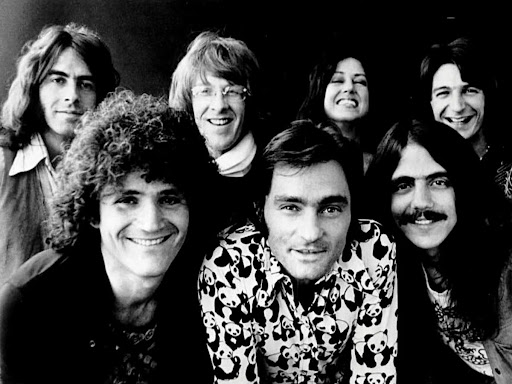#Rod Stewart #Faces #hard rock #blue-eyed soul #blues rock #folk rock #1970s
Though it’s a truth that’s now largely forgotten, at least among the young and the terminally hip, Rod Stewart was once a pretty righteous cat — foremost among interpretive singers and endowed with gangbuster rock and roll bonafides primarily, perhaps, from his role as frontman for the Faces, as gloriously disheveled, shambolic, and spirited a rock and roll band as has ever existed. The Faces’ greatness never quite gelled into a straight-up killer LP - not unless you care to count their peerless and essential Rhino box from 2004 - but their ragged spirit, careening from bawdy bar-band rock to nakedly emotional acoustic numbers, made them epochal. That spirit was in large part carried over to Every Picture Tells a Story, the solo album that made Rod Stewart a genuine pop star, but with one key difference: With Every Picture, Stewart actually made a top-to-bottom dynamite LP, as big-hearted and gloriously rough-around-the-edges as any Faces album but more unified, more conceptual, and simply better. Surely its emotional candor — its embrace of earnestness, its absence of
affectation — are key to its success. You can hear the album as a
celebration of what it is to be a young man, swaggering through the
prime of his physical, sexual, and creative life, and there’s plenty of
evidence to support such a reading, not least the uproariously crude
travelogue of an album opener, where the narrator globe-trots from one
romantic and geographic misadventure to the next; of course there’s also
the big single, “Maggie May,” that made Rod a star, and remains a
richer and more sophisticated song than it’s ever given credit for
being, a writerly showcase for Stewart’s pop instincts. Rod and his band
pound through a rowdy take on the Elvis Presley gem “That’s All Right,”
as well, but the track’s Saturday night revelry gives way to a Sunday
morning comedown in the form of a yearning “Amazing Grace,” which is
maybe the best tip-off here to the record’s emotional complexity.
Indeed, it’s as reflective as often as it is jubilant, on covers as well
as originals. In the case of the former, there are no less than two
songs that ache over time, distance, separation, and desire: A soulful,
rolling “Seems Like a Long Time” and then a definitive reading of
Dylan’s “Tomorrow Is Such a Long Time,” which offers proof enough that
Rod is the second-best singer of the Dylan songbook, bested only by Bob
himself. Tim Hardin’s “Reason to Believe” is present, too, at once
big-hearted and emotionally conflicted. It’s the album’s ringing
send-off. But its high point is Rod’s own “Mandolin Wind,” an achingly
earnest, aww-shucks kind of love song that soars from a tentative
whisper to a bold declaration. Throughout the album, Stewart blurs the
line separating hard rock and folk music, and seems almost to bend time
itself: “That’s All Right” was an oldie even then but it kicks with
garage rock immediacy; “Tomorrow Is Such a Long Time” is so earthy and
haunted, it sounds like a folk song old as the hills. It’s a celebration
of youth, this record, but more than that it’s a celebration of the
very art of song — and maybe that’s what makes it ageless. From: https://inreviewonline.com/2015/01/09/every-picture-tells-a-story/















